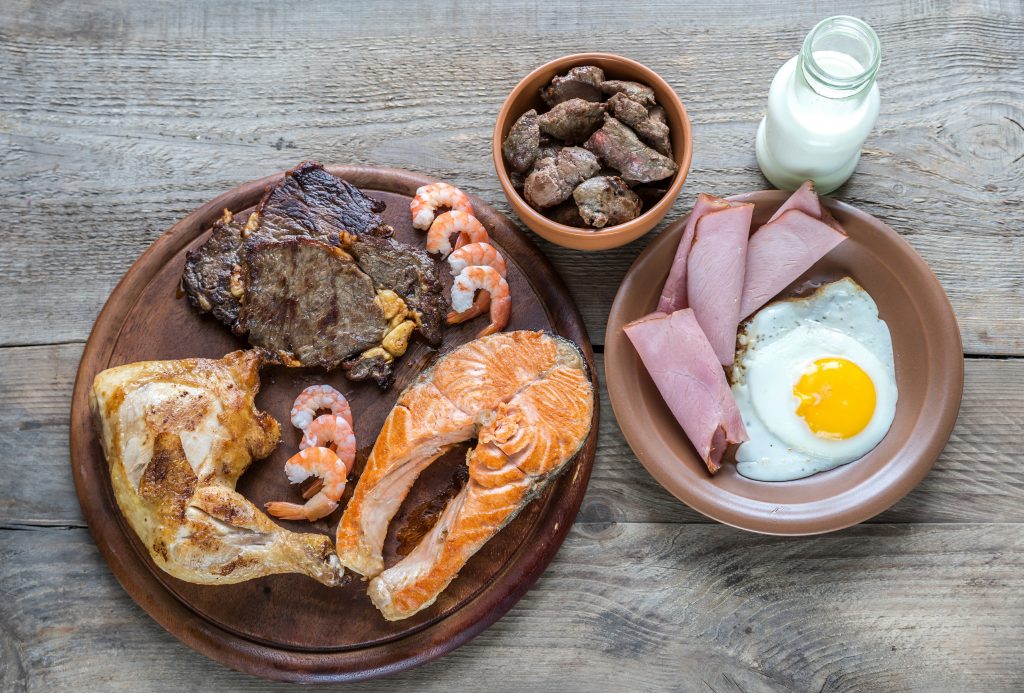Carnivore Diet vs Keto: Exploring the 5 Differences
Keto Diet, All Articles
Table of Contents
- Introduction to Carnivore vs Keto Diet
- Key Principles of Carnivore Diet vs Keto Diet
- Comparing Nutritional Benefits and Risks
- Effectiveness and Sustainability of Keto Diet vs Carnivore Diet
- Final Thoughts: Choosing the Right Diet for You
- References
Introduction to Carnivore vs Keto Diet
Introduction to the Carnivore Diet
The carnivore diet is a diet consisting mainly of animal foods, particularly muscle and organ meats. All plants and plant foods are eliminated from their diet. Based on the name of the diet, it is highly clear that the diet cuts down on eating only an animal-based diet. Some proponents recommend going into a zero-carbohydrate diet, although other followers eat a bit more in the way of dairy products and eggs. The carnivore diet has animal fat, quality animal protein, vitamins, and minerals, without many carbohydrates. The reduction of seizures is achieved by simulating starvation in the brain and burning more fat.
Introduction to the Keto Diet
A ketogenic diet is a dominant diet that has been applied as a therapeutic diet plan for managing seizures among epilepsy patients. A keto diet can get as extreme as turning over 70% of daily energy intake from fat and lowering the carbohydrate level to a maximum of 5%, with the balance of energy contributing to the protein level at 25%. Moderate protein and calorie levels complete the diet plan. The diet plan triggers the repairing process of the body by reaching out to its ketosis state, where fatty acids are the main source of fuel in order to replace glucose.
But before detailing those key differences, it’s essential to take a few steps back in order to paint the big picture. It’s best to do it by painting both the keto diet vs carnivore diet pictures, and then understand what’s the difference between keto and carnivore diet. So let’s address each in detail.
Key Principles of Carnivore Diet vs Keto Diet
The key principle of a keto diet is to make the body use fat as its main energy source instead of carbs for dealing with the ketosis process. During ketosis, there are significant reductions in blood particle counts. The cholesterol profile improves because the insulin and triglycerides cover an entirely different viewpoint. It includes reducing carbohydrate consumption and replacing it with fat. This decrease in carbs puts the body into a metabolic state called ketosis. When this happens, the body becomes extremely efficient at burning fat to produce energy. On the keto diet, the goal is to keep the macronutrient breakdown relatively consistent with 70-75% fat, 5-10% carbs, and 20-25% protein.
The carnivore diet is characterized by simply eating animal products. The foods that are primarily included are meats, fish, eggs, and animal fats and typically exclude dairy. This is very different from the keto diet, which encourages the consumption of fats such as olive oil, coconut oil, and animal fats.
Comparing Nutritional Benefits and Risks
What is the difference between carnivore diet and keto diet ?
In our environment, very low-carbohydrate diets have been proposed as an effective approach to obesity and some of its complications, in addition to other possible therapeutic benefits, such as reversing type 2 diabetes and reducing the amount of some types of drugs. In this new scenario, two systems have stood out as possible alternatives to those with red meat and its derivatives: the carnivore diet and the keto diet. Due to the similarities (in terms of nutritional content and its presence) of these specific diets produced when the decrease of carbohydrate intake is mistaken, it is the largest proportion of exogenous fat and ketone levels.
Listing of Nutritional Benefits and Risks
- Nutritional Benefits of Keto Diet:
- Effective weight loss
- Improved blood sugar control
- Enhanced mental clarity
- Increased energy levels
- Better cholesterol levels
- Nutritional Risks of Keto Diet:
- Potential nutrient deficiencies
- Increased LDL cholesterol in some individuals
- Possible liver issues
- Nutritional Benefits of Carnivore Diet:
- Reduced inflammation
- Simplified meal planning
- Enhanced gut health
- Improved mental clarity
- Nutritional Risks of Carnivore Diet:
- Risk of nutrient deficiencies
- Lack of fiber
- Social and dietary restrictions
Comparative Table of Nutritional Content
| Nutritional Aspect | Keto Diet | Carnivore Diet |
|---|---|---|
| Carbohydrates | 5-10% of daily intake | Nearly zero |
| Proteins | 20-25% of daily intake | High, from animal sources |
| Fats | 70-75% of daily intake | High, from animal sources |
| Nutritional Variety | Includes vegetables, nuts, and seeds | Only animal products |
| Potential Deficiencies | Vitamins and minerals | Fiber, vitamins C and E, phytonutrients |
Effectiveness and Sustainability of Keto Diet vs Carnivore Diet
Keto versus carnivore diet: Which is better?
It has been a few years since I have been interested in the ketogenic diet vs carnivore diet. I started learning about the carnivore diet and I always get the question, what’s the difference between keto and carnivore diet? The most striking difference is the maximum amount of carbohydrate allowed in the diet: in the case of a ketogenic diet, we are talking about approximately 20 grams of carbohydrates distributed among vegetables and fruits, without the right to anything refined or industrialized. The carnivore diet does not have the same restrictive goal and exists in a more general version, consisting mostly of meats of all kinds or only red meats and salt.
Table: Comparison of Effectiveness and Sustainability
| Factor | Keto Diet | Carnivore Diet |
|---|---|---|
| Long-term Sustainability | More flexible and socially adaptable | Strict and socially isolating |
| Weight Loss | Effective | Effective |
| Inflammation Reduction | Moderate | High |
| Mental Clarity | Improved | Improved |
| Meal Planning | Requires more variety | Simplified |
Practical Tips for Choosing the Right Diet
- Evaluate Your Health Objectives:
- Weight Loss: Both diets can aid in weight loss, but the keto diet may be more sustainable long-term.
- Inflammation Reduction: The carnivore diet may be more effective in reducing inflammation.
- Consider Nutritional Needs:
- Ensure you are getting the necessary nutrients from a variety of foods or supplements, regardless of the diet you choose.
- Assess Your Lifestyle:
- Choose a diet that fits your lifestyle and is sustainable in the long term. The flexibility of the keto diet may make it easier to follow in social settings.
- Experiment and Track:
- Try both diets for a short period and track how your body responds. Use this information to make an informed decision.

Final Thoughts: Choosing the Right Diet for You
Carnivore diet versus keto: Which suits you?
Is the carnivore diet keto? The carnivore diet is a subcategory of the ketogenic diet and is a very specific version of this very low-carb diet. So, is keto and carnivore diet the same? No. While there are many types of carbohydrate intake in the keto community, there is a lot of room for fruit, vegetables, and sugar substitutes, even if you don’t really eat much fruit and vegetables. As their carb intake is limited to about 3% of your daily calories, fruits and vegetables are usually very low in carbs compared to all the keto food groups.
In our comparison of the carnivore diet vs keto diet, we’ll talk about the different types of ketogenic diets and how many servings of fruits and vegetables are included in each. Tip: If you want to lose weight, increase your vegetables in terms of nutritional value instead of cutting out foods in a low-quality vegetable diet. The definition of the keto diet vs carnivore is not black and white, so the answer is that each side of things is a matter of taste, preference, and personal options for preparing and planning meals.
References
Using this structured approach, you can decide whether the carnivore diet vs keto diet is best for you.